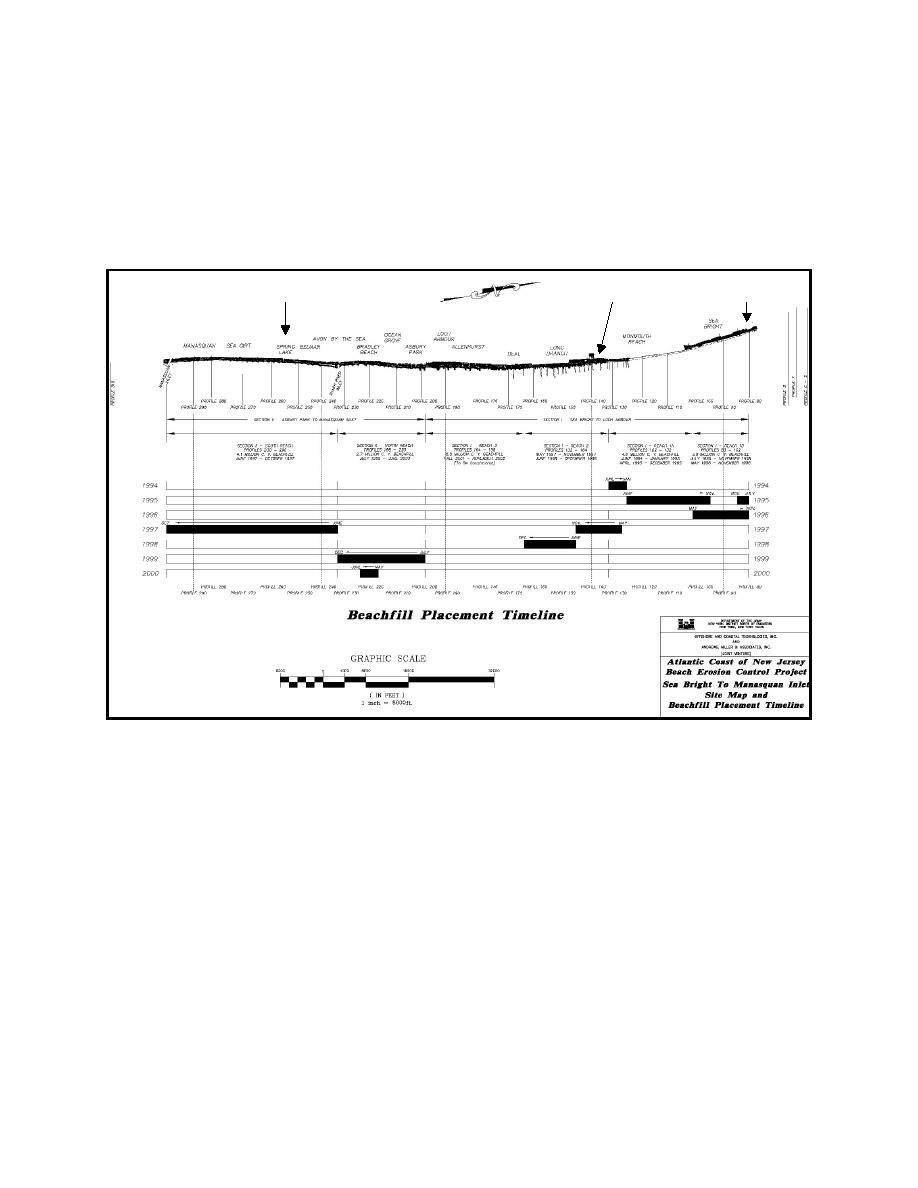
ERDC/CHL CHETN-II-47
March 2004
30-m (100-ft) berm width (Figure 5). This area was also at the southern end of Reach 1A and end
losses were suspected as a contributor to loss of fill material. This hot spot was resolved with the
addition of fill to the south with placement in the next Reach 2 making the beach planform more
uniform along the entire reach and the new fill provided an updrift source of sand for the hot spot
(net drift is north along this part of the New Jersey coast). The hot spot area was again renourished in
September and October 2002 as planned and will continue to be monitored to assess the behavior of
this hot spot.
Hot Spot 2
Hot Spot 1
Hot Spot 3
Figure 4.
Construction sequence of the Sea Bright New Jersey project (courtesy of Lynn Bocamazo,
New York District)
The second hot spot at Spring Lake was located within a groin compartment along a stretch of beach
with a groin field. Initial fill was placed between April and October 1997. A visible difference in
erosion rates was noticed by the following spring, 610 m (2,000 ft) north of groin 143. To investigate
the hot spot, beach profiles and sediment monitoring were increased in this area, and numerical
modeling of surf zone hydrodynamics conducted. Construction details were reviewed and a change
from one borrow area to another was noted during construction in this area. The wave climate and
storm history was also examined for the period after fill placement. The groin length/spacing ratio
was examined and groin notching was considered as an alternative to enhance longshore transport
and restore the flow of sediments between groin compartments. A determination of causes indicated
that the cross-shore adjustment started immediately after fill placement. The average grain size in the
erosive hot spot area was smaller than in groin compartments to the south due to the change in
borrow areas. Groin 143 should have been notched, because it was trapping too much material.
7


 Previous Page
Previous Page
